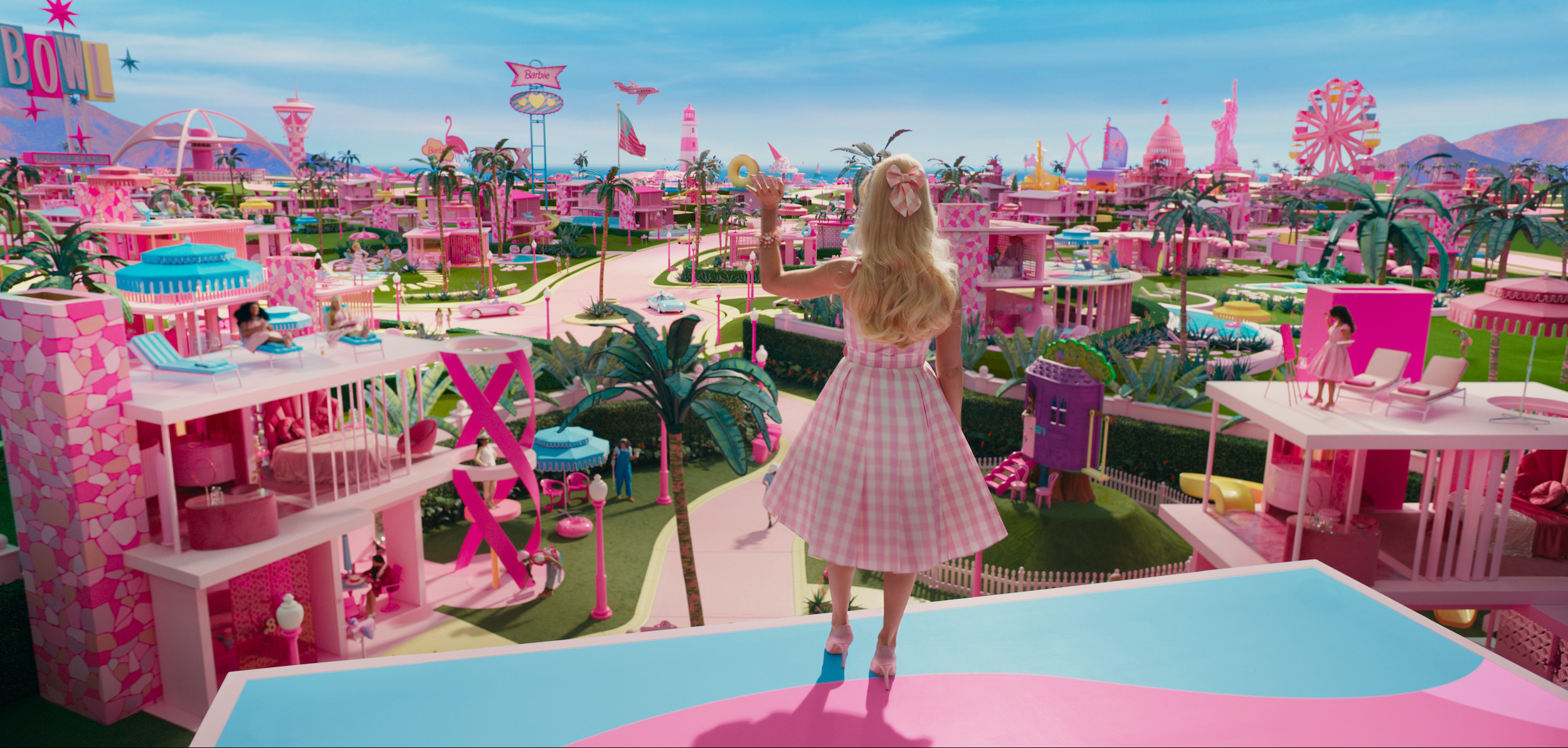From Barbie’s pink Mid-Century Modern to the Belle Epoque-Gothic of Poor Things, step behind the scenes at the set design nominees for this year’s Academy Awards
The Academy Award for Best Achievement in Production Design represents various styles and genres, from historically accurate period décor to fantastical and futuristic sets. This year’s Oscar noms are no exception, as moviegoers are treated to a bathed-in-pink Mid-century Modern Dreamland, a retro visionary world of Belle-Epoque Europe, Napoleonic France, 1920s Oklahoma, and a built-from-scratch desert town in New Mexico during the time of World War II.
Napoleon
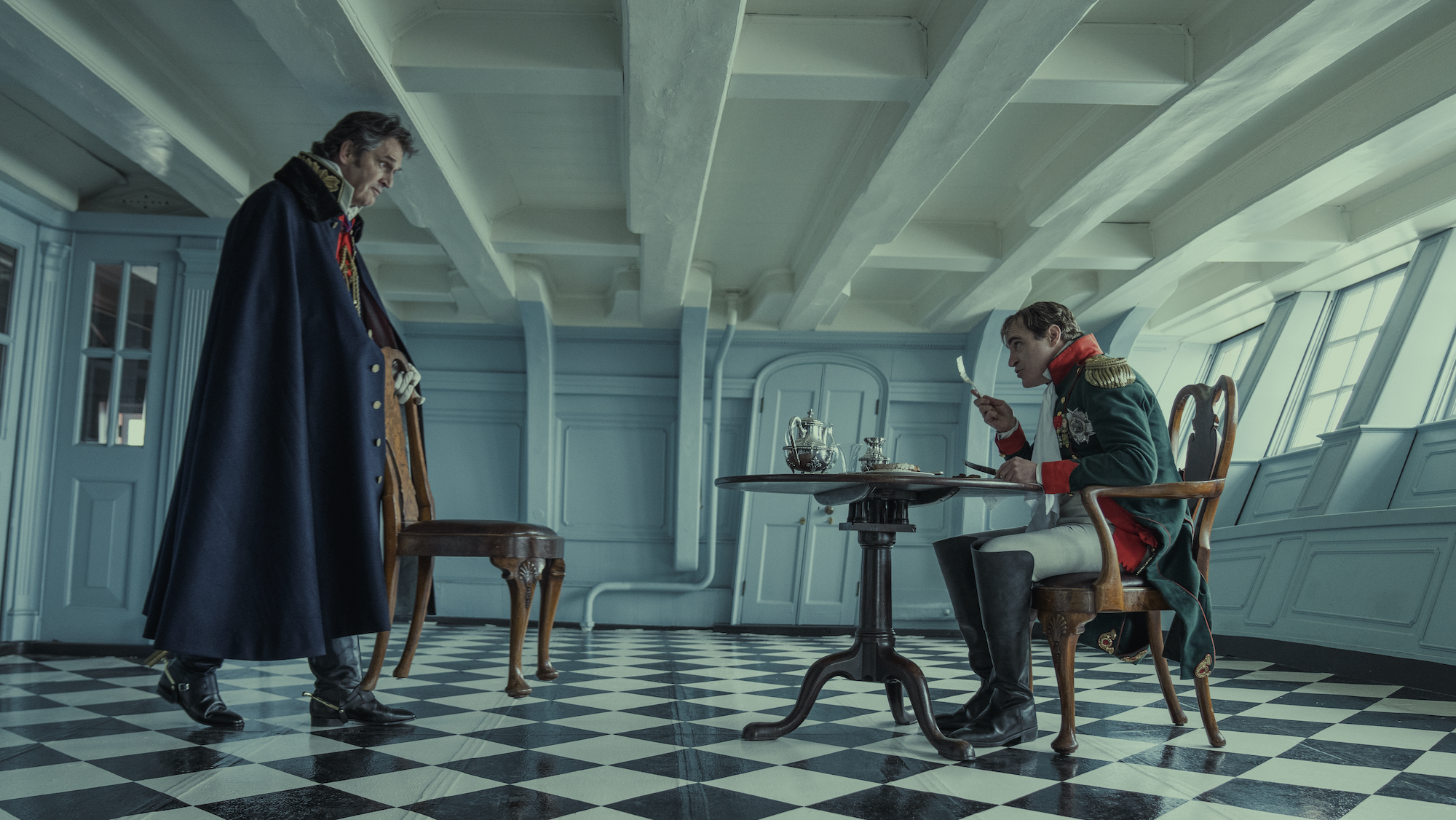
Production Designer: Arthur Max
Set Decorator: Elli Griff
Veteran production designer and three-time Oscar nominee Arthur Max teams again with director Ridley Scott for the epic film Napoleon. Creating the French emperor and military leader’s various homes and battles during the French Revolution (six to be exact) was no easy feat. Set in the 19th and 20th centuries and starring Joaquin Phoenix as one of the most famous figures in history, the film’s grand palaces and battlefields were shot in England, Morocco, France, and Malta (with a little help from CGI). Max and set decorator Elli Griff turned neoclassical English palaces into French chateaus, Italian classic Palladian architecture, and a deserted Moscow. The stately Boughton House in Northamptonshire (often referred to as the “English Versailles”) doubled as Chateau Bonaparte, the home he shared with his wife Josephine.
The film pays homage to Bonaparte’s love and contribution to Empire Style (namely furniture and architecture), which is still a major fixture in the design world today. Napoleonic III style also grew because of his penchant for tented bed designs and pennant-style draperies. No details were left unturned as they designed everything from horse blankets, emblems, and battle uniforms to a replica of an 18th-century French frigate.
Barbie
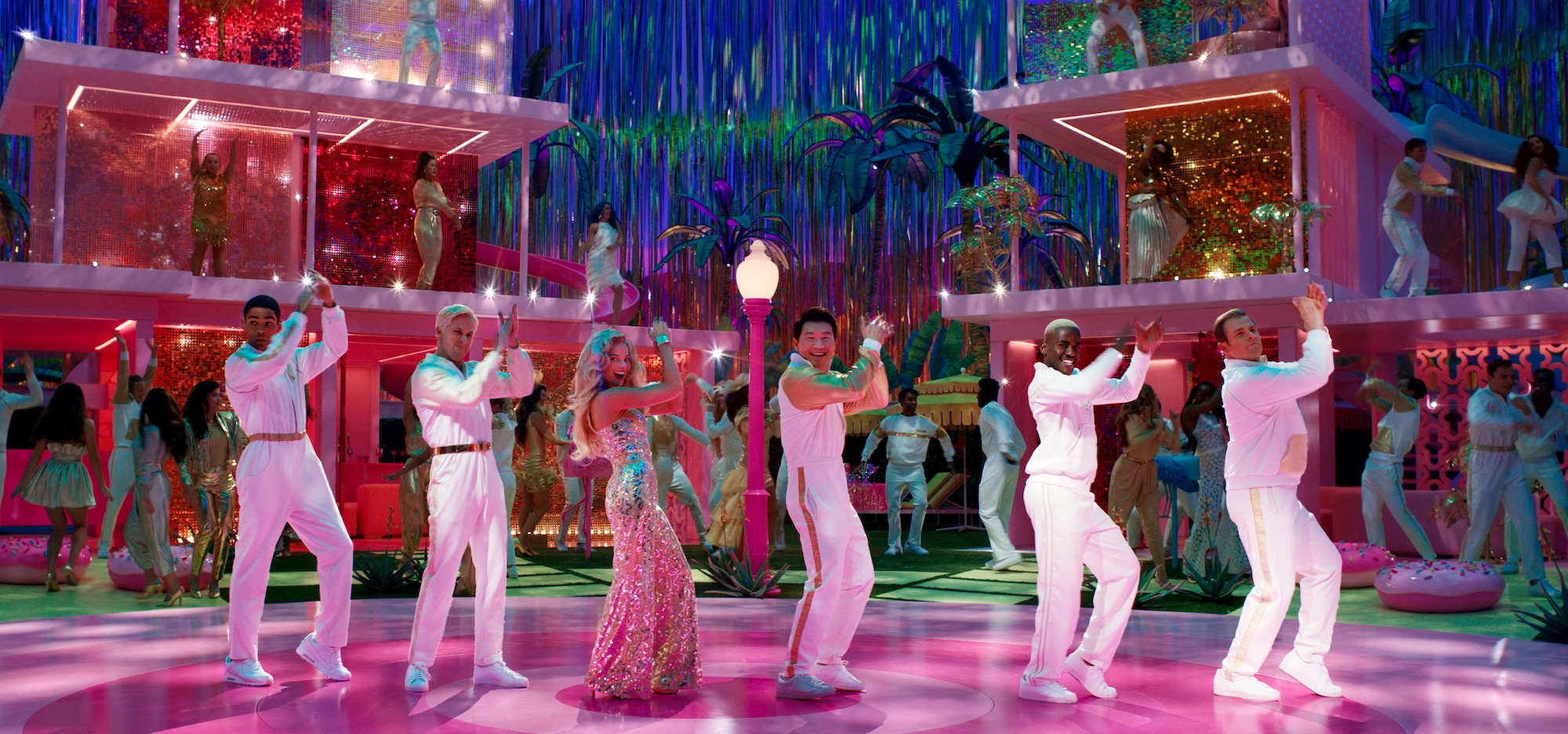
Production Designer: Sarah Greenwood
Set Decorator: Katie Spencer
Bright and bold pinks and vivid fuchsia color became the major design notes for the meteoric hit film Barbie.
For the design team Sarah Greenwood and Katie Spencer, who perfected the period films of Atonement, Anna Karenina, and Pride & Prejudice, creating the environs for the world’s most famous doll was new to them as they never played with Barbie growing up. Their first stop was the Mattel Headquarters in El Segundo, California for a deep dive into all things Barbie (they called it Barbie Bootcamp), including a look into her wardrobe and Dreamhouse.

Filmed at Warner Brothers’ Leavesden Studio north-west of London, the open-plan houses in cul-de-sacs with no walls and staircases are primarily influenced by the Mid-century Modern resort town of Palm Springs via special effects and scaled-down set model proportions. The open plan also allows her to “float” from floor to floor; as Greenwood details: “What makes it fun is the scale—we reduced the size of the houses and the cars by 23 percent to create the feeling of them being toys.” The effects also translated into director Greta Gerwig’s directive to create a sense of “authentic artificiality.”
And what about all that pink? Greenwood whittled down the color from hundreds to a dozen pinks for the furnishings, costumes, props, and vehicles. The color was so popular that it exhausted the global inventory of the film’s supplier, Royco Paint.
Oppenheimer
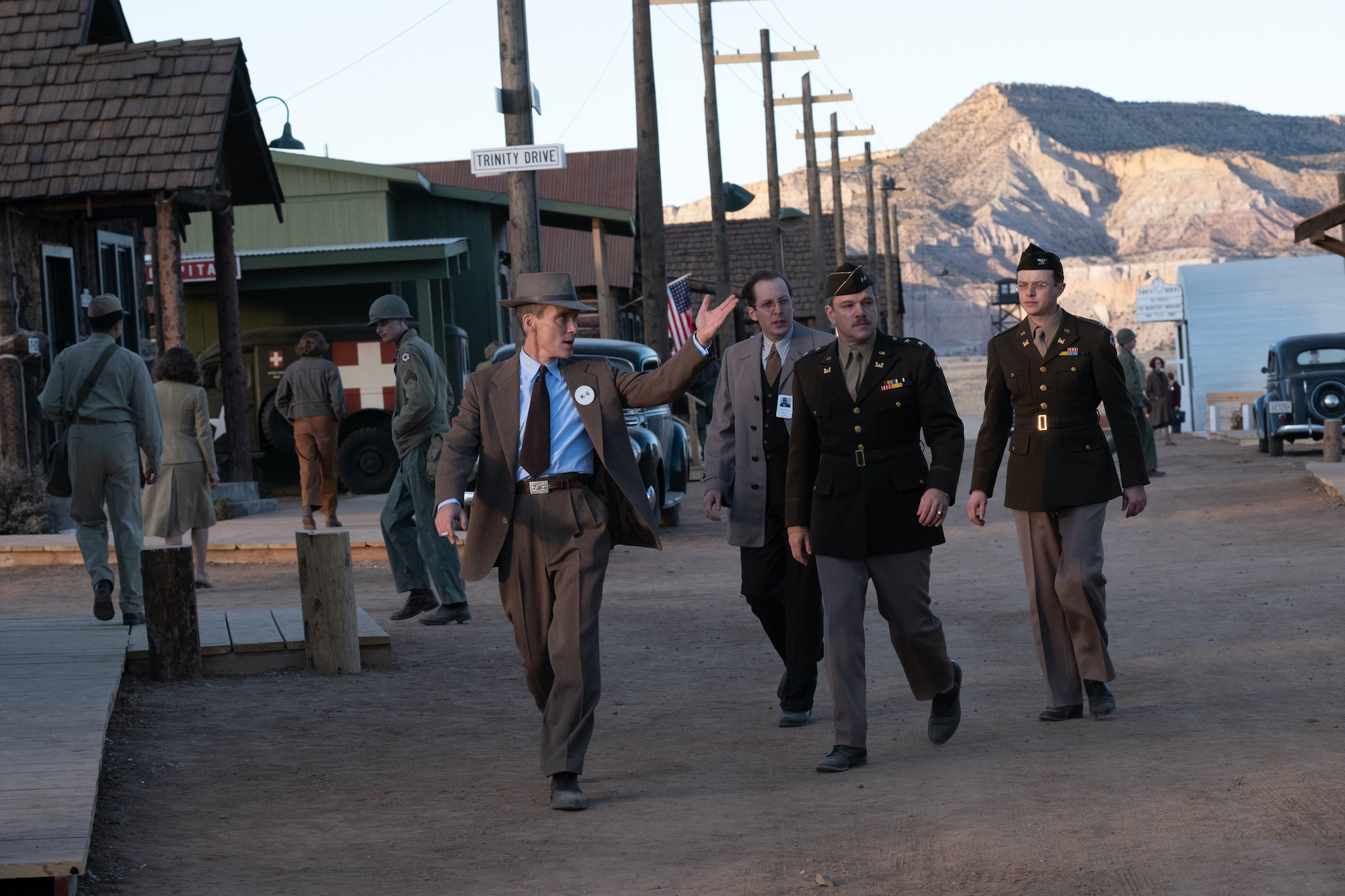
Production Designer: Ruth De Jong
Set Decorator: Claire Kaufman
Director Christopher Nolan’s blockbuster film Oppenheimer tells the story of American physicist J. Robert Oppenheimer (played by Cillian Murphy) and his role in developing the atomic bomb. A large part of the period piece takes place in Los Alamos, New Mexico, the location of the government’s secretive Manhattan Project.
Scrapping plans to shoot the film in the real Los Alamos (it was too modernized), production designer Ruth De Jong and her crew recreated the town at Ghost Ranch, a 21,000-acre expanse in Northern Mexico. The result is a basecamp for the Project, devoid of soundstages where the viewer is completely immersed with nature as the backdrop and incredible 360-degree views. Other key sets and filming locations included the grounds of the Institute of Advanced Study at Princeton, where Oppenheimer and Albert Einstein worked together after World War II. As luck would have it, Einstein’s old office was preserved, and they allowed the designers access to recreate it as Oppenheimer’s office.
Harry Truman’s Oval office in the White House was an essential set that unfortunately fell through just seven days before filming at the Nixon Library in Yorba Linda. As luck would have it, the filmmakers gained access to the pre-existing built-to-scale White House sets of HBO’s award-winning satire Veep lying flat-packed in storage.
Hailed as one of the year’s greatest films, Oppenheimer is nominated for 13 Oscars and recently won the Best Period film at the Art Directors Guild Awards.
Poor Things
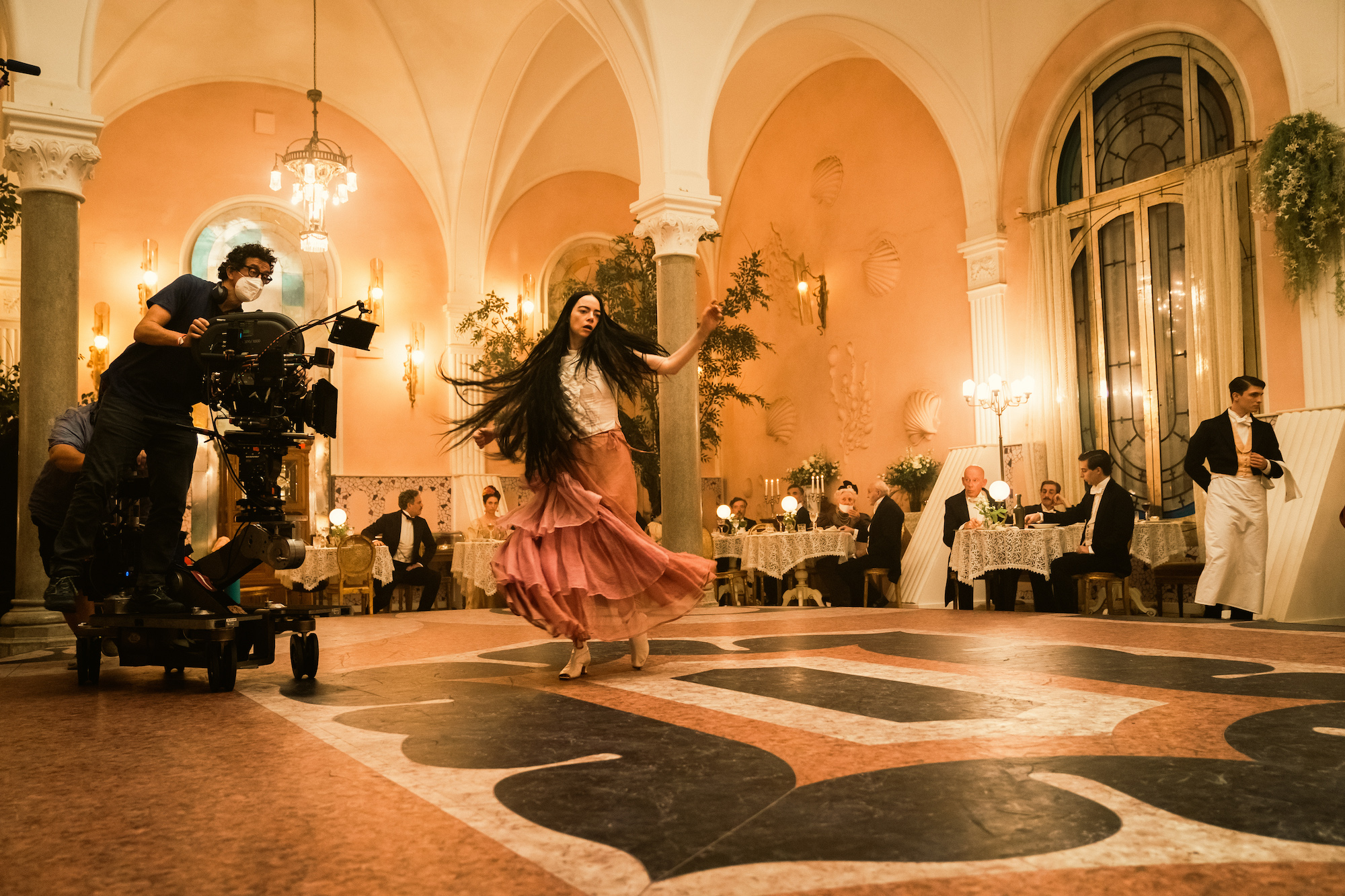
Production Designers: Shona Heath and James Price
Set Decorator: Zsuzsa Mihalek
Director Yorgos Lanthimos’ dystopian tale of a young woman who comes back to life with the new brain of her pregnant child is set in the surreal worlds of London, Lisbon, Paris, and Alexandria via the Origo Studios in Budapest. Think Merchant Ivory meets Gothic fairytale; the coming-of-age saga is an amalgam of Belle Epoque, Art Deco, Neo-Gothic, and wildly colorful and opulent settings. Influenced by the classic 30s film Frankenstein and Francis Ford Coppola’s Bram Stoker’s Dracula along with the artistry of Francis Bacon’s paintings and the illustrations of Albert Robida, the film is a visual journey with each destination as distinctive as the sets itself.
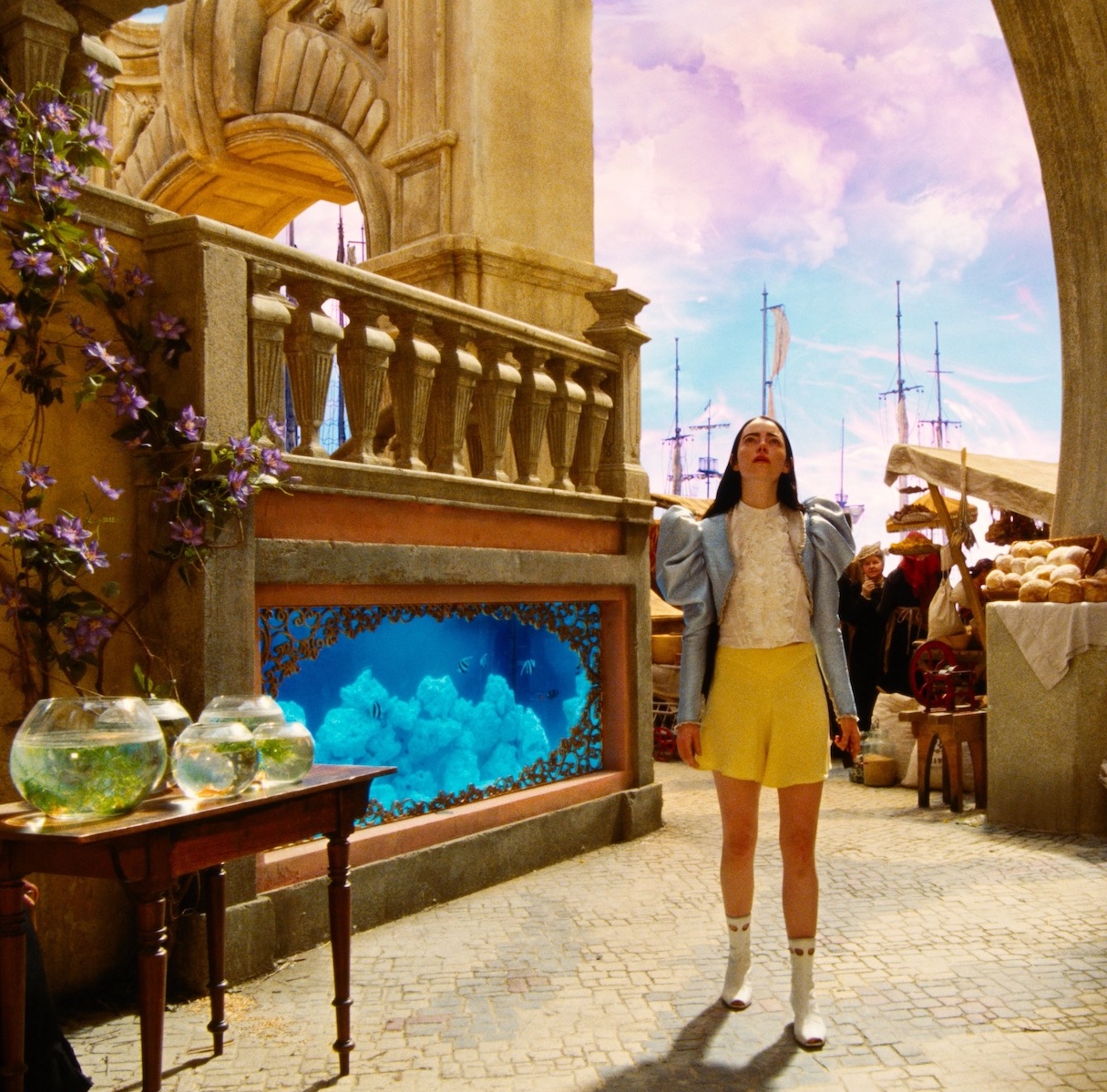
“There needed to be a world created for Bella to inhabit,” reflects Lanthimos. “It couldn’t just be something realistic. We aimed to open the period and insert elements that allude to an era but allow it to be more of a fairy tale or a metaphor for things.” For the renowned surgeon Dr. Godwin “God” Baxter, the London Neoclassical home filled with decorative blue and white porcelain plates on the wall is inspired by Sir John Soane’s Museum. The fantastical cobblestone streets and aged yellow and terracotta brick buildings of Lisbon are constructed on a soundstage against a 60-foot-high backdrop, while a magnificent stairway to Alexandria is designed in miniature. A sleek, well-appointed cruise liner and Baroque-style Parisian brothel are additional stand-out sets.
Poor Things recently received the prestigious BAFTA and the Art Directors Guild Award for Best Fantasy Production and is a front-runner for the Oscar.
Killers of the Flower Moon
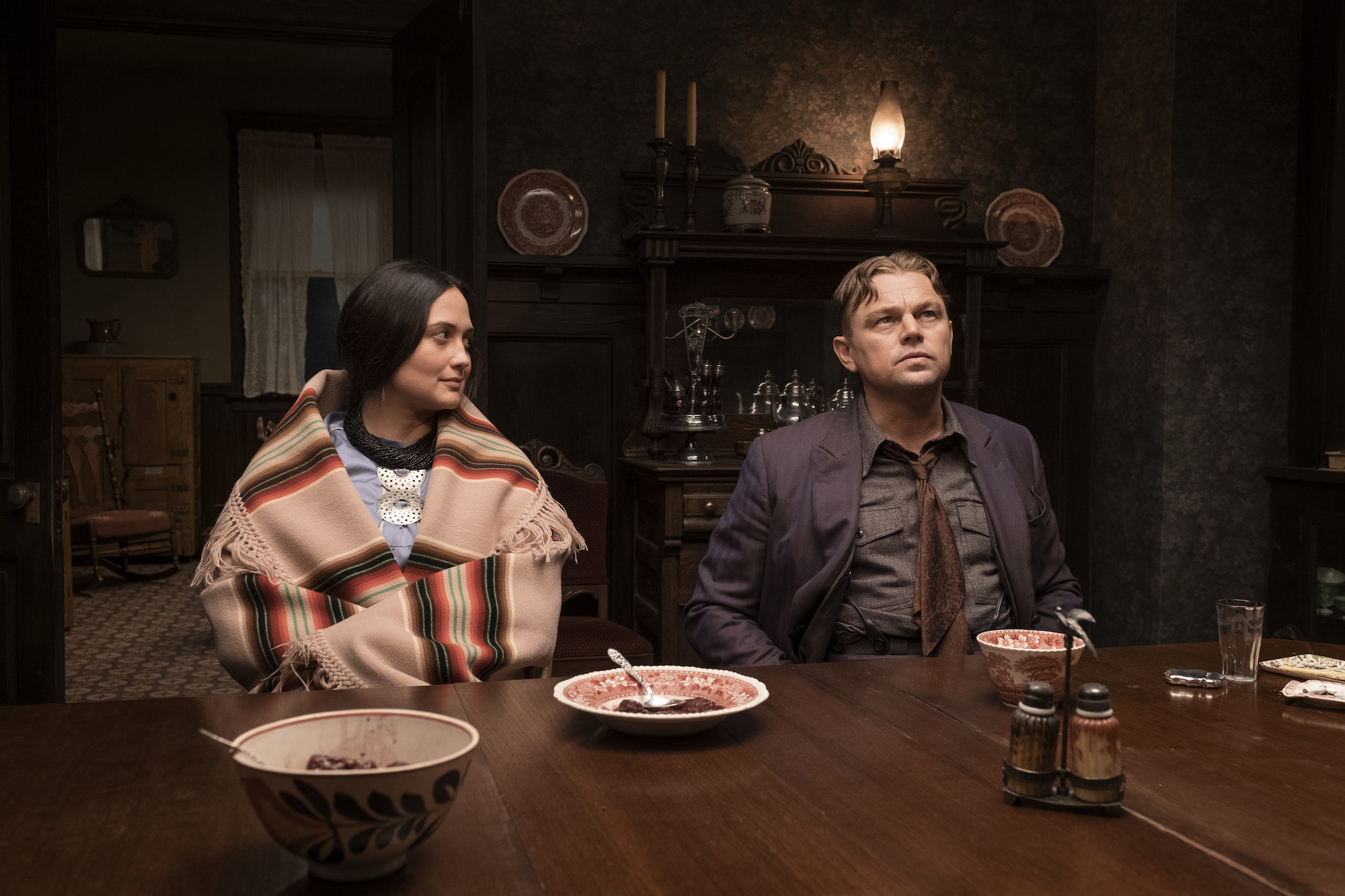
Production Designer: Jack Fisk
Set Decorator: Adam Willis
For the sets of Martin Scorsese’s Killers of the Flower Moon, veteran production designer Jack Fisk recreated early 20th-century Oklahoma, complete with a train station built from scratch that included a steam locomotive and three Pullman cars. No stranger to epic films (Days of Heaven and The Revenant), the designer and his crew created 40-plus sets depicting the true story of the systematic murder of the American Osage Nation in the 1920s. Historical accuracy was paramount in creating the 1920s-style home of the character Mollie Burkhart (Lily Gladstone) and her husband Ernest (Leo DiCaprio), the result of lots of research and archival photographs – he even located a 1920 color chart on eBay to ensure the accuracy of the color of the neighborhood houses.
Fisk, a designer who prefers building from scratch as opposed to sets on a soundstage or the use of CGI, also constructed the Osage reservation, Masonic Lodges, a combined pool hall and barbershop, and oil derricks influenced by his work on the 2007 film There Will Be Blood.
The 96th Oscars will be held on Sunday, March 10.
Read more: Interior Designers I Interiors | Design | Mid-Century | Art Deco | Los Angeles | Production Design



